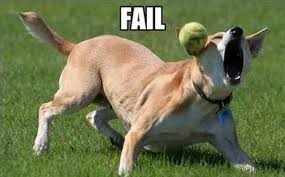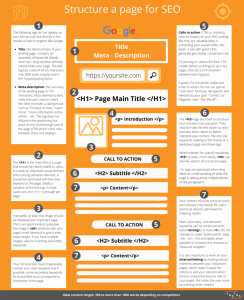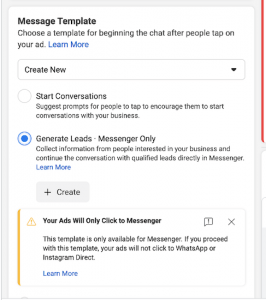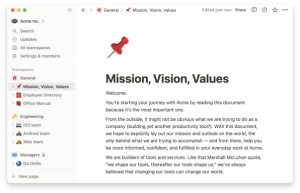How many times have you gotten a drab email from someone “just checking in”? This bland attempt at a hook to get your response will frequently go to your trash in less time than it takes to write the email. Even though they made the attempt to follow-up with you and lead you on a nurture path, they completely failed.

Following up with your contacts is one of the most crucial nurture tactics you can use with your lead campaign. Your emails should prompt the lead to want to send a response. Writing an effective follow-up with your contacts can mean the difference between a lead going cold or developing a solid relationship with the prospect.
Here’s how to write effective follow-up emails to get a response:
1. Think Simple
Even though you should write more than a quick “hey, how’s it going”, a long winded follow-up email is unnecessary. Your email should provide all of the information that your contact seeks, but without excess detail. Get straight to the point and tell them what they need to know. You want to provide information to the contact quickly while you have their attention.
In your follow-up you should always circle back to the contact. You want your messages to come across as worthwhile and valuable. When sending a follow-up email, using excessive subject lines like URGENT, or unattractive bland subject lines will not get you your desired result. Just like the body of your email, your subject line should be specific and descriptive with focus on your message.
Be specific with your questions. The more questions you bombard them with at once the less likely they are to answer all of the questions, and possibly deter a response because the leads are so overwhelmed. If you save some of your questions for later you have even more reason to follow up in the future.
Keep language conversational. Unless the contact necessitates formal language, a relaxed language style will be better received over a flowery and fluffed style of email. It will make you seem more relatable and less pompous.
If you are looking to direct someone to your website, be sure to include a direct CTA that you want them to take action on. Rather than inundating your contact with things to click on and multiple tasks, prioritize what you want them to do in the email.
2. Nurture
A follow-up typically has the end goal of leading to a sale in the future, but using your follow-up as a sales pitch is not useful. Being pushy won’t get you nearly as far as being friendly. You should be aiming to nurture your lead towards a relationship rather than give a continual pitch. Follow-ups aim to develop a relationship before asking for something from your contact.
Grow your relationship by providing value to your contact. Rather than asking what they can do for you, tell them how you can help. Focus on them rather than yourself. People are more responsive to what they can receive rather than what they need to give up.
Before reaching out to your contact, research them to make the follow-up more personal. If they recently published a blog post, added a new skill to LinkedIn, or received a promotion, mention it in your email. This shows you are interested in their life rather than just trying to cajole them for a sale.
Need some help nurturing your contacts? Check out our infographic on nurturing your most important relationships.
3. Back To The Past

Take your contact back mentally to where you first met. If you met at a conference or networking event focus on something specific about the time or place such as did you talk after a speaker, what you were standing near, or who introduced you. These will help to spark their memory.
In your follow-up, talk about something you discussed that was of mutual interest. You can make more of an impact if you send an article related to what you discussed, or start a conversation based on that topic rather than just bringing up your company and doing a sales pitch. You can even invite them to an exciting event and use it as an opportunity to get to know them better.
4. Set An Appointment
It is easy for your contacts to duck out of making a future appointment with you if you are sending a cold follow-up after a span of silence from their end. To avoid the chance of reaching the point where you need to send a cold email to check in, set an appointment while you are in contact with them.
If you are on a phone call, set up another conversation before you hang up. If you don’t get a scheduled date on the phone, then send an email recapping what you discussed and give options for future conversations. If you let them say they will follow-up with you later, then you are likely to never hear from them again.

http://www.yesware.com/blog/sales-follow-up-email/
At the end of your email suggest an appointment time and date. This allows the contact to say yes, no, or let you know a time that works for them. Discuss the next steps you plan on taking and what they should expect in the future.
If someone does not seem to be very responsive to your email follow-ups, flat out ask what is the best way to contact them. Or if there is something that you can put in your subject lines to indicate they should open your emails.
If your contact falls into the unresponsive category, you can try to pull them back in. This is much more difficult than setting up future appointments while you are conversing, but it can be done. You can try sending an email asking them what the plan is for the future, but say you are asking for your boss. People are more likely to respond to you if you are asking for someone other than yourself.

http://www.getsidekick.com/blog/number-one-follow-up-mistake
5. Make It Easy
Remember, you don’t want to focus on yourself. Making the follow up as easy as possible on your contact makes them more likely to respond.
It is highly likely that the contact has forgotten about the last conversation you had. If you are sending an email after a few days, reply to the last email that was sent. This helps your contact by not forcing them to dig through their inbox to find your message, thereby creating more work for them. By clicking reply, even though you are sending a slightly cold contact email, it is easy for your prospect to figure out who you are and what you are referencing.
Always have a reason why you are reaching out to the contact. If you have a specific reason for communicating with them, then they are likely to be more responsive to what you have to say. Personally, if I opened an email that asked me vague general questions, there is a high probability that I will not respond. One reason is that I have to make an effort to figure out what to say. So, to make your contact’s lives easier, send an email with specific talking points or what you expect them to respond with.
Ban The Hollow Follow-Up
Your follow-up should aim to set you apart from the rest by making a connection beyond the usual scope. Adding any personal details or relevant information adds more value to your follow-up. Keeping your follow-up to the point makes life easier on your contact and helps them to focus on what you are saying rather than having to pick through your email to try to understand what is happening. The email should encourage a response by being specific but to the point rather than overwhelming. Making a memorable connection through a follow up leads to a better nurtured client in the future.
(210)
Report Post








